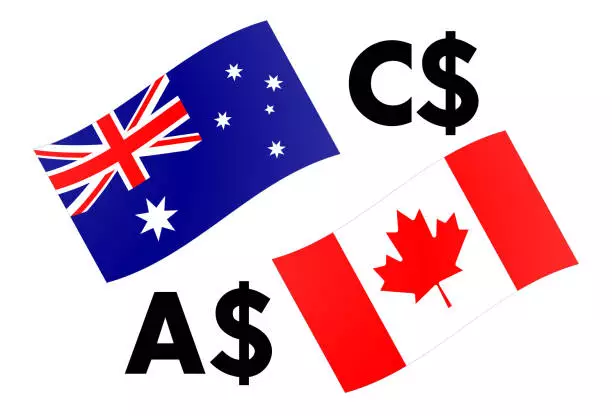As international economies reel from the implications of renewed trade tensions, dubbed Trade War 2.0, the adverse effects on global markets are palpable. This new phase of trade disputes, prominently featuring intensified tariffs not just between the United States and China, but also involving Canada, Mexico, and potentially the European Union, poses a risk of stagflation—a scenario characterized by stagnant economic growth paired with inflation. This article dissects the implications of these trade policies on key currencies, particularly the Australian dollar (AUD) and the Canadian dollar (CAD), while providing insight into the technical analysis that governs their performance on the forex market.
The landscape of Trade War 2.0 diverges significantly from its predecessor—the initial US-China trade war that ignited in January 2018. The current situation broadens the scope to include other significant trading nations. As the situation escalates, concerns about overall global economic health have intensified. Recent remarks by U.S. officials about imposing tariffs on European Union goods have intensified market volatility. This rhetoric resulted in immediate repercussions, notably a decline in the Euro and a stumbling European stock market. The exacerbation of trade tensions not only continues to jeopardize bilateral relations but also raises the specter of a broader economic downturn.
As the trade skirmishes deepen, commodities and currencies closely tied to raw materials risk further headwinds. The Australian and Canadian currencies, often considered proxies for commodity prices, become increasingly vulnerable amidst deteriorating global growth forecasts. For investors, signaling an awareness of such vulnerabilities is critical, as sentiment can shift rapidly in financial markets.
Analyzing the AUD/USD pair sheds light on how these trade tensions are sufficiently impacting currency valuations. Technical indicators reveal a recent halt in the Australian dollar’s rebound from its January lows. As of early February, the AUD has faced resistance near the 0.6330 mark, largely influenced by a bearish cross indicated by the Moving Average Convergence Divergence (MACD) below its centerline. This suggests that the prevailing downward trend, which has persisted since late September 2024, remains robust.
Market observers should closely monitor the resistance level at 0.6330. A breach of this point could indicate a reversal in momentum. Conversely, if the pair falls below the crucial support level of 0.6120, it could trigger further declines toward additional support areas at 0.6030 and 0.5870. The technical outlook remains fundamentally negative unless a definitive break above 0.6330 occurs, which would necessitate reassessing the broader bearish narrative surrounding the AUD.
The Canadian dollar (CAD) narrative parallels the complexities seen with the AUD. Current price action indicates that the USD/CAD pair has recently tested its long-term resistance around the 1.4690 threshold, a level that has held since early 2016. The daily Relative Strength Index (RSI) has entered overbought territory—a potential signal of an upcoming price adjustment, but lacking bearish divergence indicates that momentum may still favor upward movement.
A closer examination reveals that maintaining levels above 1.4300 is vital for the bullish outlook of the CAD. A downturn below this support line would indicate a probable corrective phase, potentially leading the pair back toward lower supports around 1.3890. The interplay between oil prices—integral to Canada’s economy—and the ongoing trade conflict plays a considerable role in strategizing trading positions for the CAD.
The implications of Trade War 2.0 on commodity-linked currencies such as the Australian and Canadian dollars underscore the necessity for market participants to remain agile and attentive to evolving economic dynamics. With the specter of stagflation looming and ongoing geopolitical tensions, the financial landscape remains precarious. Through meticulous technical analysis and an acute understanding of global trade factors, traders and investors can navigate the complexities of this shifting environment. The ensuing months will undoubtedly bring further developments, warranting continuous scrutiny of both currency behaviors and broader economic trends.

